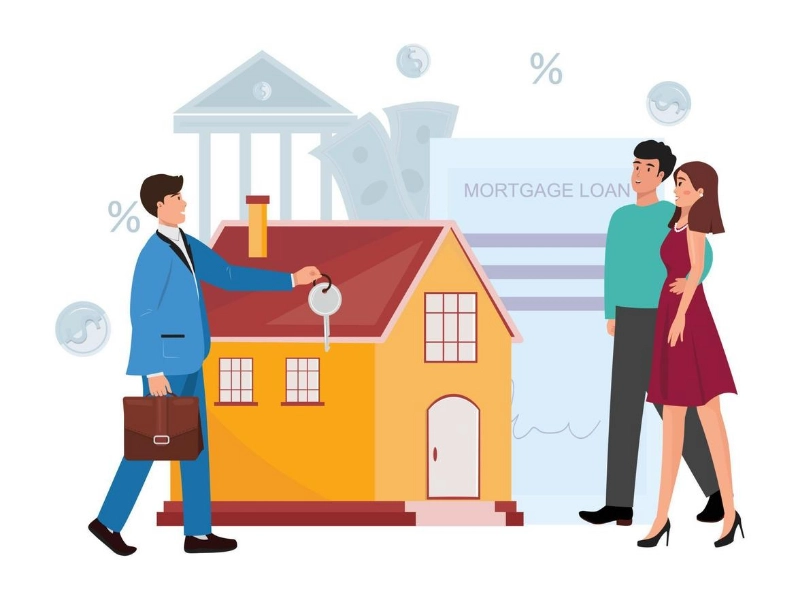Using the Student Loan Forgiveness Program Navigation
For many debtors, the intricacy of student loan forgiveness programs might be daunting. Here are some pointers to assist in understanding the prerequisites for PSLF, IDR, and other loan forgiveness programs. Receiving their loan forgiven is something that many borrowers want. A comprehensive debt relief plan has been blocked by the Supreme Court; nevertheless, President Biden is currently developing a different strategy through the regulation process.
Loan forgiveness for public service (PSLF)

Repayment Based on Income (IDR)
 An income-driven repayment plan may help make your monthly payments more reasonable if you have a large amount of federal student debt. Your monthly payment amount under these plans is determined by a percentage of your discretionary income, which is, depending on your plan, the difference between your annual income and 100 to 225 percent of the federal poverty limits.
Every year, you must recertify that you are still eligible for any income-driven repayment plan. This is a crucial step because if you don't recertify, your loan payments will be determined by the regular 10-year plan payment schedule, which will prevent you from being eligible for the forgiveness programs these plans offer.
Use the Department of Education's Loan Simulator tool to enter your specific loan information and compare various plans side by side to determine if you qualify for an IDR plan. Remember that your private loans are not covered by any of the IDR schemes; only your federal student debt is. This includes PAYE and REPAYE, which are eligible for PSLF.
An income-driven repayment plan may help make your monthly payments more reasonable if you have a large amount of federal student debt. Your monthly payment amount under these plans is determined by a percentage of your discretionary income, which is, depending on your plan, the difference between your annual income and 100 to 225 percent of the federal poverty limits.
Every year, you must recertify that you are still eligible for any income-driven repayment plan. This is a crucial step because if you don't recertify, your loan payments will be determined by the regular 10-year plan payment schedule, which will prevent you from being eligible for the forgiveness programs these plans offer.
Use the Department of Education's Loan Simulator tool to enter your specific loan information and compare various plans side by side to determine if you qualify for an IDR plan. Remember that your private loans are not covered by any of the IDR schemes; only your federal student debt is. This includes PAYE and REPAYE, which are eligible for PSLF.
Plan for Paying Back What You Earn (PAYE)
 The monthly loan payment cap under the income-driven Pay As You Earn plan is set at 10% of the borrower's disposable income. Additionally, the plan guarantees that your payments will never be higher than what they would have been under the conventional 10-year repayment plan. For this plan to remain in effect, borrowers must annually recertify their income. One of the most well-liked IDR programs also has the bonus of having any outstanding debt canceled after 20 years of qualifying repayment.
There are other ways to reduce your federal student loan payments besides PAYE, though. Revised Pay As You Earn (REPAYE) is a different IDR program that might be a better fit for you. This is the comparison between PAYE and REPAYE. Although there aren't many differences between the two systems, it's still important to know how they differ in order to make the best decision for you. After that, you can begin moving closer to your debt relief objective.
The monthly loan payment cap under the income-driven Pay As You Earn plan is set at 10% of the borrower's disposable income. Additionally, the plan guarantees that your payments will never be higher than what they would have been under the conventional 10-year repayment plan. For this plan to remain in effect, borrowers must annually recertify their income. One of the most well-liked IDR programs also has the bonus of having any outstanding debt canceled after 20 years of qualifying repayment.
There are other ways to reduce your federal student loan payments besides PAYE, though. Revised Pay As You Earn (REPAYE) is a different IDR program that might be a better fit for you. This is the comparison between PAYE and REPAYE. Although there aren't many differences between the two systems, it's still important to know how they differ in order to make the best decision for you. After that, you can begin moving closer to your debt relief objective.
Updated Repayment Schedule for Pay As You Earn (REPAYE)
 Of the four income-driven repayment plans (IDRs) available for federal student loans, REPAYE is one. Similar to other individualized dependent retirement plans, REPAYE bases your monthly contribution on 10% of your discretionary income, which is the portion of your adjusted gross income that surpasses 150 percent of the poverty threshold for your family size in your state. Nevertheless, in contrast to other IDRs, the REPAYE plan pays all of the accumulated interest that is not covered by your payment, providing subsidized loans with an additional interest subsidy.
This makes REPAYE an excellent choice for veterinarians who are thinking about PSLF or who are drawn to the shorter payback durations of IDR plans and who have student loan debt from their undergraduate and/or doctoral degrees. REPAYE, like other IDRs, requires you to provide yearly documentation of your income in order to maintain loan repayment compliance. Your loan payments will change to an extended (5-year) or standard (10-year) payback period if you miss the deadline, and any unpaid interest will be capitalized. When making your choice, you can evaluate PAYE against alternative IDR methods with the use of the Student Loan Repayment Simulator from the VIN Foundation.
Of the four income-driven repayment plans (IDRs) available for federal student loans, REPAYE is one. Similar to other individualized dependent retirement plans, REPAYE bases your monthly contribution on 10% of your discretionary income, which is the portion of your adjusted gross income that surpasses 150 percent of the poverty threshold for your family size in your state. Nevertheless, in contrast to other IDRs, the REPAYE plan pays all of the accumulated interest that is not covered by your payment, providing subsidized loans with an additional interest subsidy.
This makes REPAYE an excellent choice for veterinarians who are thinking about PSLF or who are drawn to the shorter payback durations of IDR plans and who have student loan debt from their undergraduate and/or doctoral degrees. REPAYE, like other IDRs, requires you to provide yearly documentation of your income in order to maintain loan repayment compliance. Your loan payments will change to an extended (5-year) or standard (10-year) payback period if you miss the deadline, and any unpaid interest will be capitalized. When making your choice, you can evaluate PAYE against alternative IDR methods with the use of the Student Loan Repayment Simulator from the VIN Foundation.








